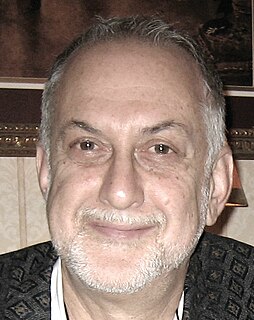
Christopher Wolfgang John Alexander was an Austrian-born British-American architect and design theorist. He was an emeritus professor at the University of California, Berkeley. His theories about the nature of human-centered design have affected fields beyond architecture, including urban design, software, and sociology. Alexander designed and personally built over 100 buildings, both as an architect and a general contractor.

Urban design is an approach to the design of buildings and the spaces between them that focuses on specific design processes and outcomes. In addition to designing and shaping the physical features of towns, cities, and regional spaces, urban design considers 'bigger picture' issues of economic, social and environmental value and social design. Scope of a project can range from a local street or public space to an entire city and surrounding areas. Urban designers connect the fields of architecture, landscape architecture and urban planning to better organize physical space and community environments.

Berenice Alice Abbott was an American photographer best known for her portraits of between-the-wars 20th century cultural figures, New York City photographs of architecture and urban design of the 1930s, and science interpretation in the 1940s to 1960s.

Andrés Duany is an American architect, an urban planner, and a founder of the Congress for the New Urbanism.

Environmental psychology is a branch of psychology that explores the relationship between humans and the external world. It examines the way in which the natural environment and our built environments shape us as individuals. Environmental Psychology emphasizes how humans change the environment and how the environment changes humans' experiences and behaviors. The field defines the term environment broadly, encompassing natural environments, social settings, built environments, learning environments, and informational environments. According to an article on APA Psychnet, environmental psychology is when a person thinks of a plan, travels to a certain place, and follows through with the plan throughout their behavior.
Urban studies is based on the study of the urban development of cities. This includes studying the history of city development from an architectural point of view, to the impact of urban design on community development efforts. The core theoretical and methodological concerns of the urban studies field come from the social science disciplines of history, economics, sociology, geography, political science, anthropology, and the professional fields of urban planning, architecture, landscape architecture, and urban design. Urban studies helps with the understanding of human values, development, and the interactions they have with their physical environment.
Free Press was an American independent book publisher that later became an imprint of Simon & Schuster. It was one of the best-known publishers specializing in serious nonfiction, including path-breaking sociology books of the 1950s, 1960s and 1970s. After a period under new ownership in the 1980s of publishing neoconservative books, it was purchased by Simon & Schuster in 1994. By 2012, the imprint ceased to exist as a distinct entity; however, some books were still being published using the Free Press imprint.

Michael David Sorkin was an American architectural and urban critic, designer, and educator. He was considered to be "one of architecture’s most outspoken public intellectuals," a polemical voice in contemporary culture and the design of urban places at the turn of the twenty-first century. Sorkin first rose to prominence as an architectural critic for the Village Voice in New York City, a post which he held for a decade throughout the 1980s. In the ensuing years, he taught at prominent universities around the world, practiced through his eponymous firm, established a nonprofit book press, and directed the urban design program at the City College of New York. He died at age 71 from complications brought on by COVID-19 during the COVID-19 pandemic.

Neal Elgar Miller was an American experimental psychologist. Described as an energetic man with a variety of interests, including physics, biology and writing, Miller entered the field of psychology to pursue these. With a background training in the sciences, he was inspired by professors and leading psychologists at the time to work on various areas in behavioral psychology and physiological psychology, specifically, relating visceral responses to behavior.
Louis Edward Sauer is an American architect and design theorist. In the 1960s, and 1970s, Sauer atypically worked with housing developers, producing low-rise high-density housing projects.
Interest in the Architecture of Las Vegas began in the late 1960s, when in 1967 architects Robert Venturi and Denise Scott Brown traveled to the city accompanied by students in order to study its architecture. They wrote, with Steven Izenour, a report in 1972 on the subject entitled Learning From Las Vegas: the Forgotten Symbolism of Architectural Form. This report, and its thesis that Las Vegas showed the way for architecture in the late 20th century, drew the attention of the architectural world to the city. A quarter of a century later, for a BBC program Venturi and Scott Brown revisited the city, and revised their opinions.

Carl Wilbur Condit was an American historian of urban and architectural history, a writer, professor, and teacher. He was professor at Northwestern University 1945–82. He wrote numerous books and articles on the history of American building, especially Chicago, Cincinnati, and the Port of New York. He founded the History of Science Department at Northwestern University, where he taught for over 30 years. His research specialty was the architecture of Chicago, Illinois, and he lived in Chicago most of his life, having moved there in 1945 in order to study its urban and technological development.

Coprophilia, also called scatophilia or scat, is the paraphilia involving sexual arousal and pleasure from feces.
Clovis Heimsath, FAIA is an American architect with significant contributions to both architectural scholarship and modern architecture, particularly in Texas. He was educated at Yale, where he was an editorial associate of campus humor magazine The Yale Record.

This bibliography of Sociology is a list of works, organized by subdiscipline, on the subject of sociology. Some of the works are selected from general anthologies of sociology, while other works are selected because they are notable enough to be mentioned in a general history of sociology or one of its subdisciplines.
The following is a timeline of the history of the city of Algiers, Algeria.
Joan Valerie Bondurant (1918–2006) was an American political scientist and former spy for the Office of Strategic Services (OSS) during World War II. She is best known as the author of Conquest of Violence: The Ghandian Philosophy of Conflict (1958), a book on Gandhian political philosophy.
George Joseph Ranalli is an American modernist architect, scholar, curator, and fellow of the American Institute of Architects. He is based in New York City.

Urban planning, also known as town planning, city planning, regional planning, or rural planning, is a technical and political process that is focused on the development and design of land use and the built environment, including air, water, and the infrastructure passing into and out of urban areas, such as transportation, communications, and distribution networks and their accessibility. Traditionally, urban planning followed a top-down approach in master planning the physical layout of human settlements. The primary concern was the public welfare, which included considerations of efficiency, sanitation, protection and use of the environment, as well as effects of the master plans on the social and economic activities. Over time, urban planning has adopted a focus on the social and environmental bottom-lines that focus on planning as a tool to improve the health and well-being of people while maintaining sustainability standards. Sustainable development was added as one of the main goals of all planning endeavors in the late 20th century when the detrimental economic and the environmental impacts of the previous models of planning had become apparent. Similarly, in the early 21st century, Jane Jacob's writings on legal and political perspectives to emphasize the interests of residents, businesses and communities effectively influenced urban planners to take into broader consideration of resident experiences and needs while planning.

The following is a list of works about Boston, Massachusetts, USA.:











